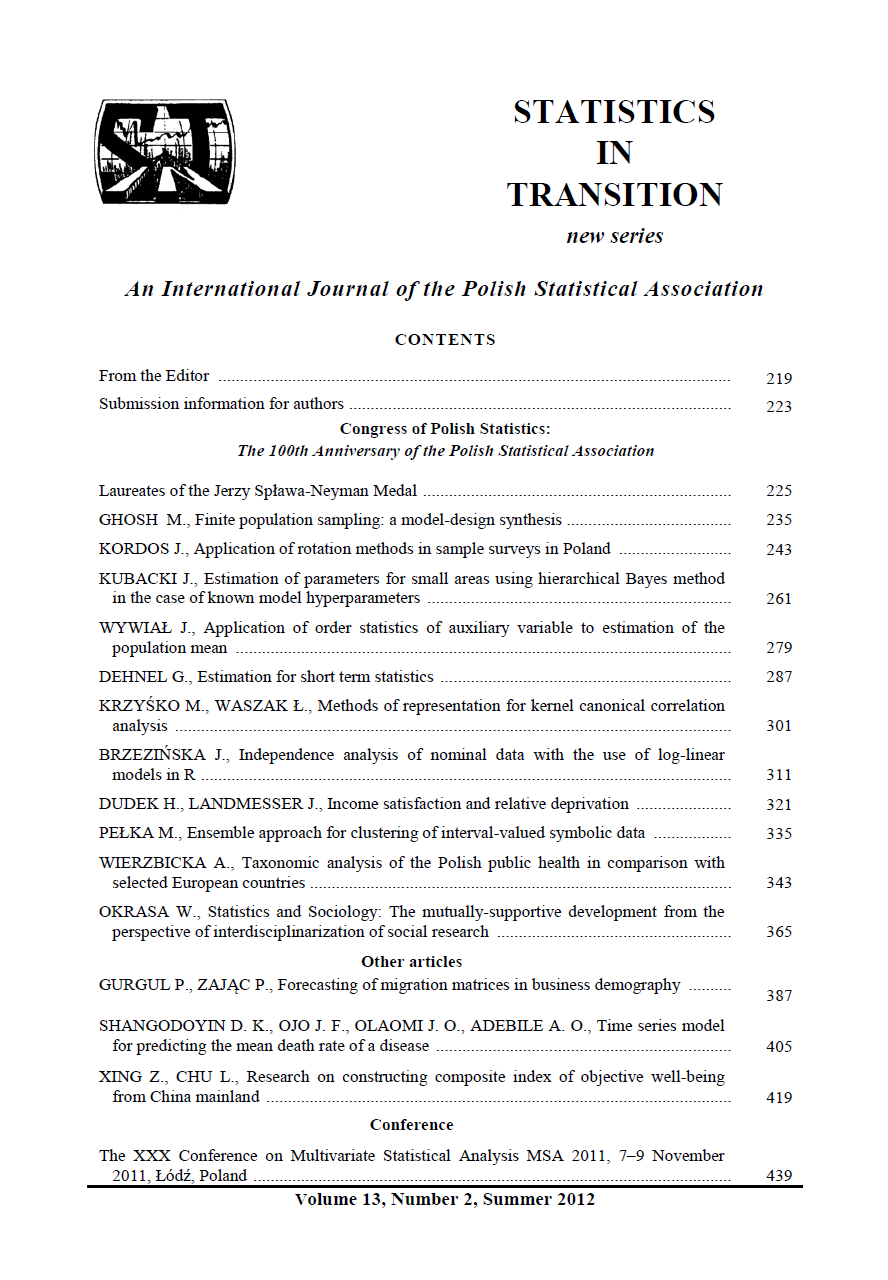ARTICLE
ABSTRACT
Classical canonical correlation analysis seeks the associations between two data sets, i.e. it searches for linear combinations of the original variables having maximal correlation. Our task is to maximize this correlation. This problem is equivalent to solving the generalized eigenvalue problem. The maximal correlation coefficient (being a solution of this problem) is the first canonical correlation coefficient. In this paper we construct nonlinear canonical correlation analysis in reproducing kernel Hilbert spaces. The new kernel generalized eigenvalue problem always has the solution equal to one, and this is a typical case of over-fitting. We present methods to solve this problem and compare the results obtained by classical and kernel canonical correlation analysis
KEYWORDS
Canonical correlation analysis, generalized eigenvalue problem, reproducing kernel Hilbert space
REFERENCES
ARONSZAJN, N. (1950): Theory of reproducing kernels, Transactions of the American Mathematical Society 68, 337–404.
HARDLE, W., SIMAR, L. (2007): Applied Multivariate Statistical Analysis, Springer, 321-330 and 434-435.
HOTELLING, H. (1936): Relation between two sets of variates, Biometrika 28, 321-377.
PREDA, C. (2006): Regression models for functional data by reproducing kernel Hilbert spaces methods, Journal of Statistical Planning and Inference 137, 831.
ZHENG, W., ZHOU, X., ZOU, C., ZHAO L. (2006): Facial Expression Recognition Using Kernel Canonical Correlation Analysis, IEEE Transaction on Neural Networks 17(1), 233
